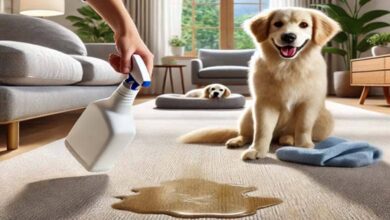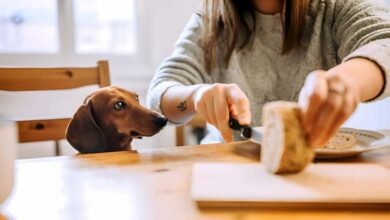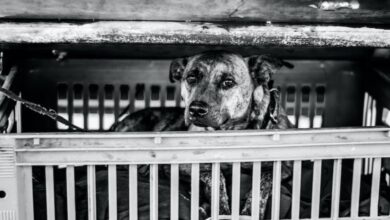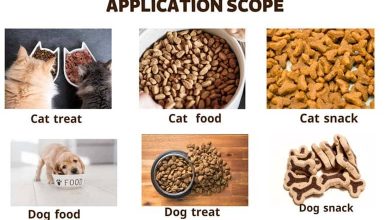Your Ultimate Guide to the Groodle
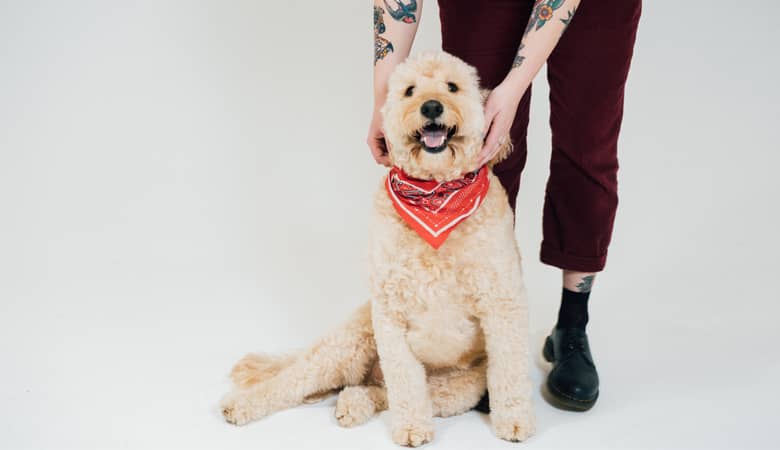
Also called Goldendoodle, Golden Poo, and Goldie Poo, the Groodle is among the most popular Oodles in Australia. A cross between a Golden Retriever and Poodle, it was originally bred in the 1960s as an allergy-safe guide dog. Today, this hybrid is a favourite household companion because of its excellent temperament, adorable appearance, and hypoallergenic coat. Learn more about the Groodle here and see if this adorable designer dog matches your lifestyle.
Appearance
Because the Groodle is a relatively new crossbreed, its appearance varies from one dog to another. Generally, however, it has a teddy bear-like face, long nose, floppy ears, an athletic build, and long legs.
The Groodle can be miniature, medium, or standard in size, depending on the variant of its Poodle parent. It can weigh from 6.8 to 45.4 kilograms and can reach up to 66 centimetres in height.
This designer dog has three coat types: straight, fleece, and wool. Coat colours include black, grey, brown, gold, cream, apricot, and red, with or without markings.
Temperament
The Groodle combines the best traits of its parent breeds: the placid nature of the Golden Retriever and the playful character of the Poodle. It is an affectionate, social, and intelligent dog that loves being with people and participating in family activities. Because of its high energy, it is well suited to an active household.
This crossbreed thrives on human contact and enjoys being showered with attention. Small things, like going out for a walk or watching television with its human, make it happy. When left alone for long periods, it can develop separation anxiety and behavioural problems.
It is highly adaptable, so it fits easily into households that have kids and other pets. It does well with children of all ages and has a high tolerance for them. It is friendly and patient towards cats and other dogs, especially when exposed to them at an early age.
Health
When properly cared for, a Groodle can live from 12 to 15 years. While generally healthy, it is still prone to health issues inherited from its purebred parents. Common genetic diseases to watch out for include the following:
- Hip Dysplasia – This condition occurs when the ball of the Groodle’s hip joint does not develop as it normally should, becoming loose and resulting in lameness and arthritis.
- Patellar Luxation – This condition occurs when the Groodle’s kneecap is regularly dislocated, resulting in pain and limping. Symptoms can be reduced by ensuring that the dog maintains a healthy weight.
- Cataracts – Both the Golden Retriever and Poodle are prone to eye issues, making the Groodle susceptible to developing cataracts. This condition occurs when the dog’s eye lens becomes opaque, resulting in blurred vision and, in severe cases, blindness.
Feeding
It is recommended that Groodles be fed a high-quality and well-balanced diet that is appropriate for their age, size, and activity level. Protein sources, such as chicken, lamb, turkey, pork, and beef, are advised for growth and development. Nutrient-rich ingredients, such as salmon oil, liver, and flaxseed, are suggested for short- and long-term health.
Because Groodle puppies are more active and burn calories faster than Groodle adults, they need to eat more frequently. Puppies typically need to eat three to four times per day, while adults only need to eat once or twice daily. It is important to speak with a veterinarian about the best food for this crossbreed, the amount of food it should be fed, and the frequency of its feeding.
Bear in mind that some Groodles are prone to stomach upsets, which is why human food is better left out of their diet. They may also become overweight, so it is best to regularly monitor their level of weight and consumption of calories.
Grooming
When grooming a Groodle, consider its coat type. A Groodle with a straight or flat coat is less likely to mat and will only require a quick brush once a month. Meanwhile, a Groodle with both fleece and wool coat mat easily and will require weekly brushes.
The Groodle only needs to be bathed when necessary. Often, a bath once a month is enough. It is important to use a gentle and vet-recommended dog shampoo to avoid stripping off the natural oils from the pooch’s skin and coat.
Some Groodle owners choose to completely shave off their dog’s coat twice a year to reduce trips to a professional groomer. Otherwise, they will need to take their dog to a pro for clipping approximately every six to eight weeks.
To reduce tear staining and prevent the buildup of eye discharge, a Groodle’s eyes should be cleaned daily with a cotton ball dampened in warm water. The insides of its ears should be wiped regularly with a cotton ball that is lightly soaked in an ear-cleaning solution to prevent foul odour.
Exercise
The Groodle is adaptable and enjoys both city and country settings. It does well in a house with a backyard where it can run around and play. While it is not best suited for small apartments, it can adjust provided that its high-energy needs are met. When it isn’t mentally or physically stimulated regularly, it can develop destructive habits.
Typically, this crossbreed needs around two hours of extensive exercise daily to be healthy and happy. It may be in the form of a walk in the park, swim on the beach, or game of fetch.
Training
Because it inherits the even-tempered nature of its Golden Retriever parent and the intelligence of its Poodle parent, the Groodle is easier to train compared with other breeds. It loves to please people and is eager to learn new things, making it a wonderful match for a first-time dog owner. It is obedient and won’t give its human a hard time during training.
The best time to train a Groodle is from day one of its arrival. Sessions should be kept fun and short, and positive reinforcements are encouraged. When properly trained and socialised, this crossbreed can become an excellent therapy or service dog.

